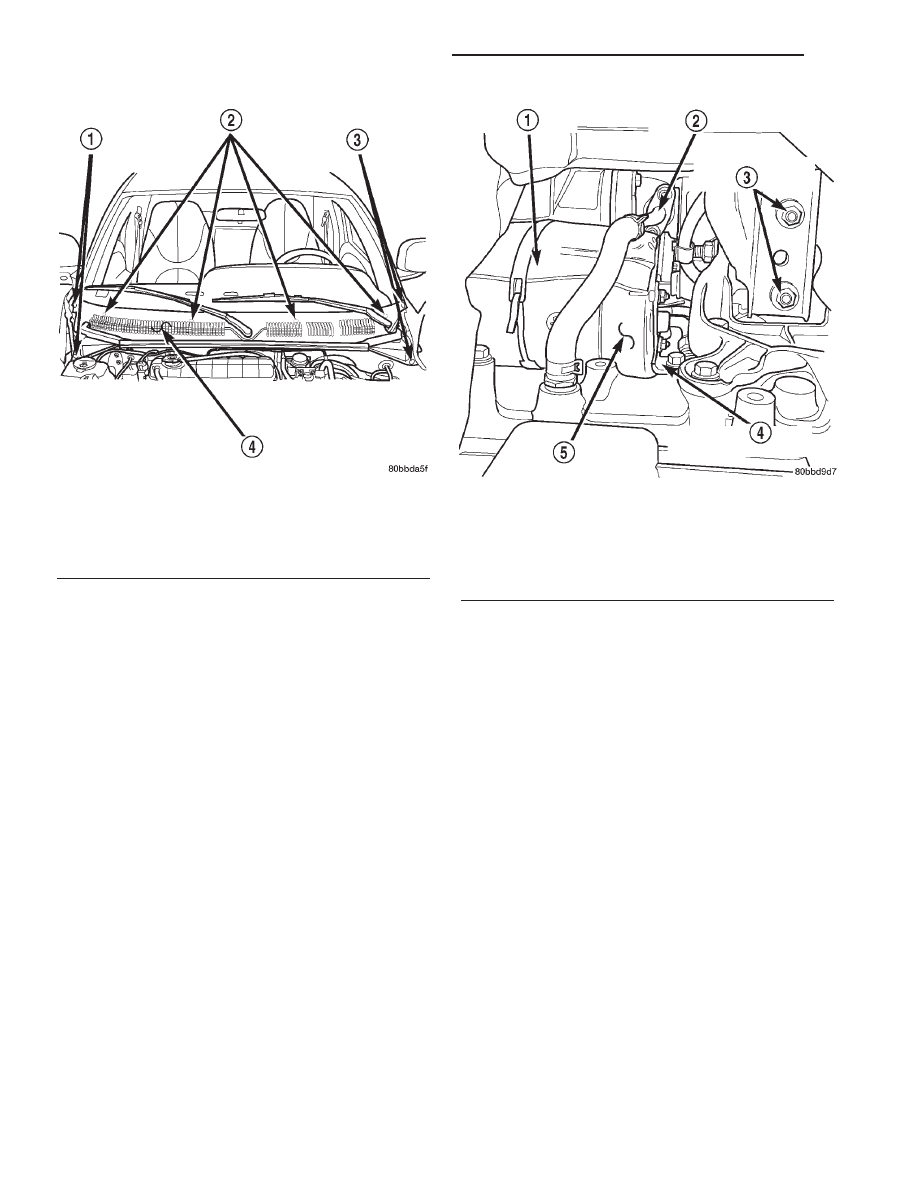Dodge Dakota (R1). Manual - part 552

(18) Install the cowl grille (Fig. 9) (Refer to 23 -
BODY/EXTERIOR/COWL GRILLE - INSTALLATION).
(19) Raise the vehicle on the hoist.
(20) Install the oil return line on the turbocharger
(Fig. 10). Torque the bolts to 11 N·m (97 in. lbs.).
(21) Install the lower front splash shield.
(22) Lower the vehicle on the hoist.
(23) A new turbocharger must be pre-lubricated
with clean engine oil before engine start up. Pour
10–20 cc (.5–1 ounce) of oil into the oil pressure sup-
ply fitting hole.
(24) Rotate the turbine wheel to allow the oil to
enter the turbocharger.
(25) Install the turbocharger oil supply line on the
turbocharger. Torque banjo bolt to 27 N·m (20 ft. lbs.).
(26) Fill the cooling system (Refer to 7 - COOLING
- STANDARD PROCEDURE).
(27) Install both of the wiper arms on the vehicle.
Refer to Group 8K, Wiper and Washer Systems for
the procedure.
(28) Connect the negative battery cable.
(29) Start the engine and check for leaks.
CHARGE AIR COOLER
DESCRIPTION
On 2.5L turbo diesel engine equipped vehicles, the
charge air cooler (intercooler) is bolted to and sup-
ported by the radiator. If either one of these compo-
nents requires replacement they must be removed
from the vehicle as an assembly and disassembled on
a bench. For the charge air cooler (intercooler)
replacement procedure (Refer to 7 - COOLING/EN-
GINE/RADIATOR - REMOVAL) and (Refer to 7 -
COOLING/ENGINE/RADIATOR - INSTALLATION).
Fig. 9 Cowl Grille
1 - PUSHPINS
2 - COWL GRILLE RETAINING NUTS
3 - PUSHPINS
4 - COWL GRILLE
Fig. 10 Turbocharger Oil Return Line Position
1 - STARTER MOTOR HEATSHIELD
2 - TURBOCHARGER OIL RETURN LINE
3 - RIGHT ENGINE MOUNT RETAINING NUTS
4 - STARTER MOTOR SUPPORT BRACKET
5 - STARTER MOTOR
11a - 6
EXHAUST SYSTEM AND TURBOCHARGER
R1
EXHAUST MANIFOLD AND TURBOCHARGER (Continued)